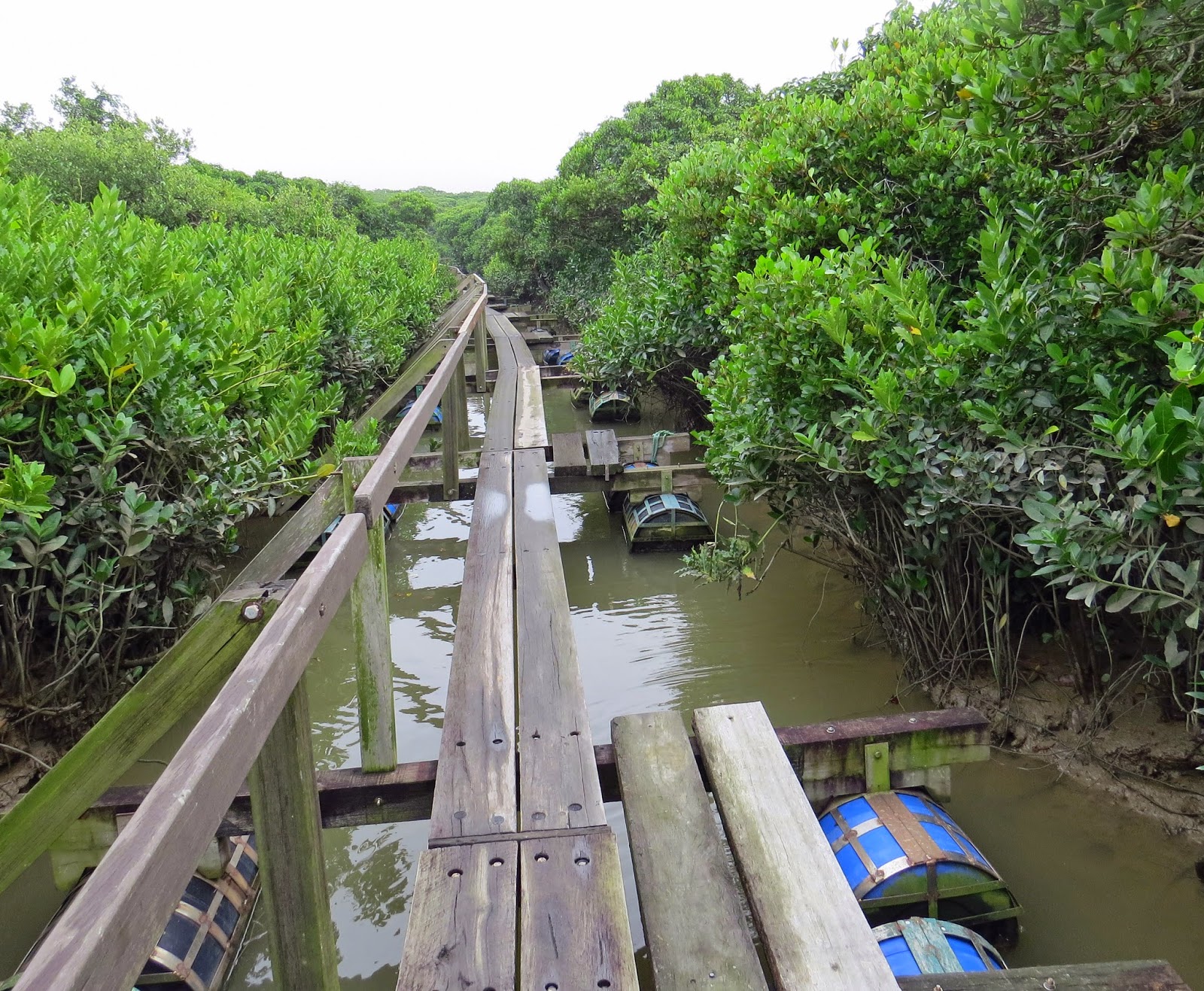This is an internationally important wetland reserve managed by the WWF.
However, unlike our many great reserves, the WWF will not generally allow solo visitors yet only offer guided trips at weekends and holidays. As I was only able to visit on a weekday I applied to visit alone.
This involved numerous forms to be completed as the reserve is in the New Territories and actually overlaps the border with mainland China. For part of the reserve you have to cross a border point and to avoid visas you get a special exemption pass. You also have to be a member of a recognised wildlife organisation such as RSPB if you are not a member of WWF.
In addition, WWF will only allow a maximum of 5 passes a day to be granted.
We were flying at 11.30 in the evening of the 3rd December so I had tried to get a pass for 2nd (failed) so went for the 3rd.
I got the briefest email back saying it was OK but no paperwork or instructions on what to do or take!
On arrival at our hotel in Hong Kong I asked the guest relations officer to call them for me to double check with my Cantonese being a tad limited!
I was told to get there for 9am (it is not open before) with my passport and would be presented with my pass - cost about £15.
Getting there was fairly straight forward with 3 changes on the Hong Kong underground (MTR) then a taxi from the last station to the reserve.
I arrived to the visitor centre at 8.40 and milled around. at 08.45 a guy came up to me and asked if I was Gary, invited me into the centre through the staff entrance and gave me two passes and a plastic WWF badge on a lanyard. The WWF badge allows access to the reserve but I had to go to another hut further down the track where Chinese border officials would rubber stamp my pass to allow me to access the restricted area.
The walk to this hut gave me some excellent birds with Long Tailed Shrike and Crested Myna as well as other common birds.
After a glance from the non smiling official I had my stamp and entered the reserve.
Mai Po is massive and I was very aware that I would not see all of it in a day.
It covers a mixture of shrimp farm, marsh, lily covered ponds. mangrove swamp and mudflats.
The weather though dry and mild was very dark so photos were difficult.
The shrimp farms are at the entrance and gave me decent views of hundreds of Cormorants, Pied Kingfishers, Common Sandpiper, White Wagtail and an array of Herons and Egrets.
The marshes and ponds were stuffed with ducks - all familiar species to us with vast numbers of Shoveler, Pintail, Tufted Duck and Pochard.Yellow Nib Duck and Baurs Pochard were distant local species.
Too fast for my shutter finger were White Fronted Waterhen and familiar Moorhens were all around.
However, it was the massive colonies of Herons and Egrets that took my breath away with literally hundreds in one place.
A particular species which is internationally threatened is the Black Faced Spoonbill and Mai Po holds the largest gathering anywhere on the planet.
I was fortunate enough to get great views.
I decided to cross a pond via a broadwalk which was particularly beautiful and just as I started I noticed an Olive Backed Pipit skulking in nearby bushes.
Hides were very good quality and there were a number but my time was limited and I was determined to see the mudflats. Sadly, I knew that the tides were not in my favour so everything would be a long way out. This is also the restricted area.
As I approached I could not help notice the massive fence with an unobtrusive gate in between.
The guard seemed unhappy with my camera so I decided against a selfie and was waived through.
This area takes you through mangrove via a floating broadwalk.
It was easy to hear but difficult to spot birds though I did get a a couple of shots of a confiding Dusky Warbler.
The broadwalk leads to a floating hide and looks out over the mudflats. They were vast and reminded me of Snettisham but without a scope, the thousands of waders were simply too far out. My only photo was a Kentish Plover but identified Avocet, Grey Plover, Pacific Golden Plover, Little Ringed Plover, Black Winged Stilt and again numerous herons.
I walked back, said goodbye to the guard and walked back into Hong Kong!
I followed the fence line and saw Azure Winged Magpie and Collared Crow.
The bushes adjacent to the ponds were alive with birds but due to the density and time now being against me I failed to ID many of them!
However, another speciality of the reserve gave me great views with both male and female Daurian Redstart.
Further along I saw two different Prinia. Yellow Bellied were too fast but I did get a decent shot of a Plain Prinia.
I had also added to my list a number of other new birds such as Violet Laughing Thrush, Eastern Marsh Harrier, Striated Heron and Little Grebe.
I could have happily spent another day at this reserve - perhaps the finest I have been to anywhere in the world but it was time to go.
A token stuffed Panda for Jen from the visitor centre and it was back to the hotel then home.
A marvellous way to finish a great holiday!

























































